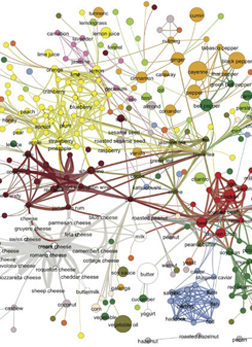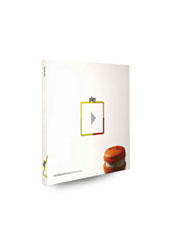Articles
Adding the flavor to food science
A study by Northeastern University network scientists
News - Articles
North American and Western European cuisines tend to use ingredients that share flavor compounds, while East Asian and
Southern European cuisines tend to avoid ingredients that share flavor compounds, according to a study by Northeastern
University network scientists.
The findings - which were reported in the December edition of the online journal Scientific Reports - appear to debunk
the food-pairing hypothesis, which is based on the principle that foods that share flavor compounds taste better together.
"Some scientists in the molecular gastronomy community think foods with similar compositions taste well together, but we found that it really depends
on the region," said coauthor Albert-Laszlo Barabasi, a Distinguished Professor of Physics with joint appointments in biology and the College of Computer and
Information Science.
Barabasi - who recently received an honorary doctorate from the Technical University of Madrid for his contributions to the fields of science and
engineering - is the founding director of Northeastern’s world-renowned Center for Complex Network Research (CCNR).
The team of researchers, including former CCNR postdoctoral research associates James Bagrow, Sebastian Ahnert and Yong-Yeol Ahn, took a network-based approach
to explore the impact of flavor compounds on ingredient combinations. They designed and analyzed the bipartite network of links between ingredients and flavor
compounds found in more than 56,000 recipes from three online repositories, including epicurious.com,
allrecipes.com, and menupan.com.
Two ingredients were connected if they shared at least one flavor compound. On average, a pair of ingredients in North American cuisine shared 11.7 flavor compounds.
By contrast, a pair of ingredients in East Asian cuisine shared an average of 6.2 flavor compounds.
Compared to a randomized recipe dataset, North American dishes tended to use ingredients with more shared compounds than expected by chance, while East
Asia dishes tended to use ingredients with fewer than shared compounds than expected.
The researchers found that a small number of ingredients contributed to the food paring effect in each region. Some 13 ingredients in North American cuisine,
including milk, eggs and butter, appeared in roughly 74 percent of all recipes.
"These ingredients played a disproportionate role in the cuisine and contributed to the shared compound effect," Barabasi explained.
What’s his favorite food? "I like Hungarian ethnic food, but I won’t reject a good steak or a good burger," Barabasi quipped.
Source:www.northeastern.edu






